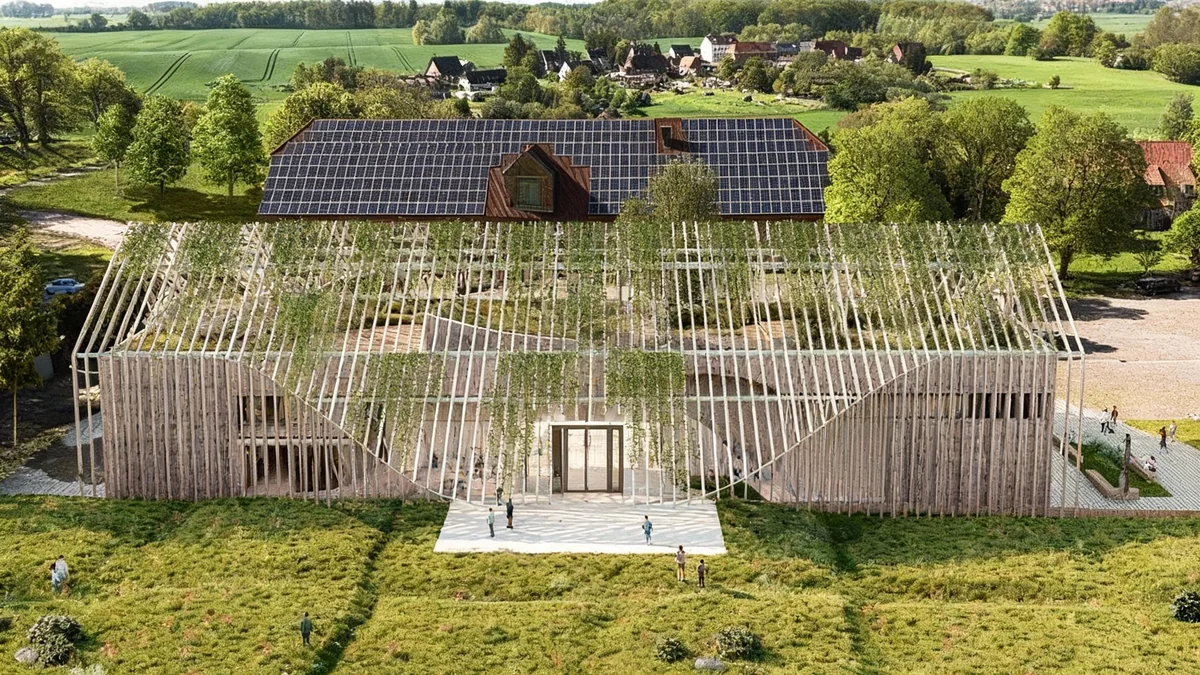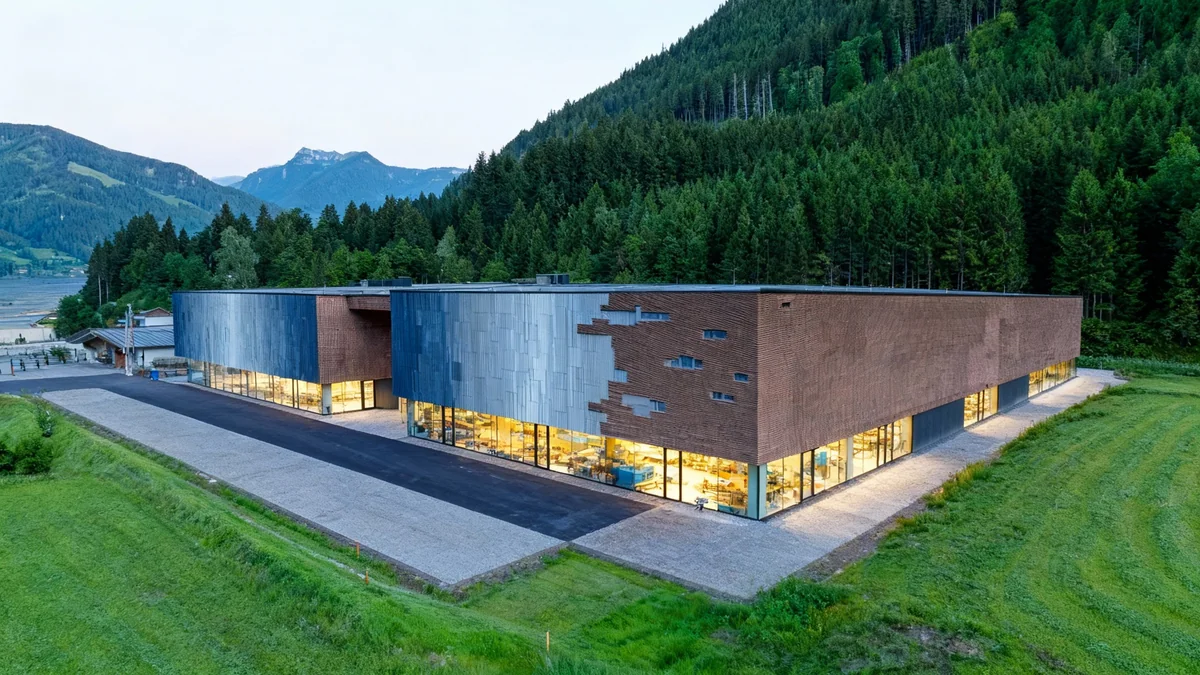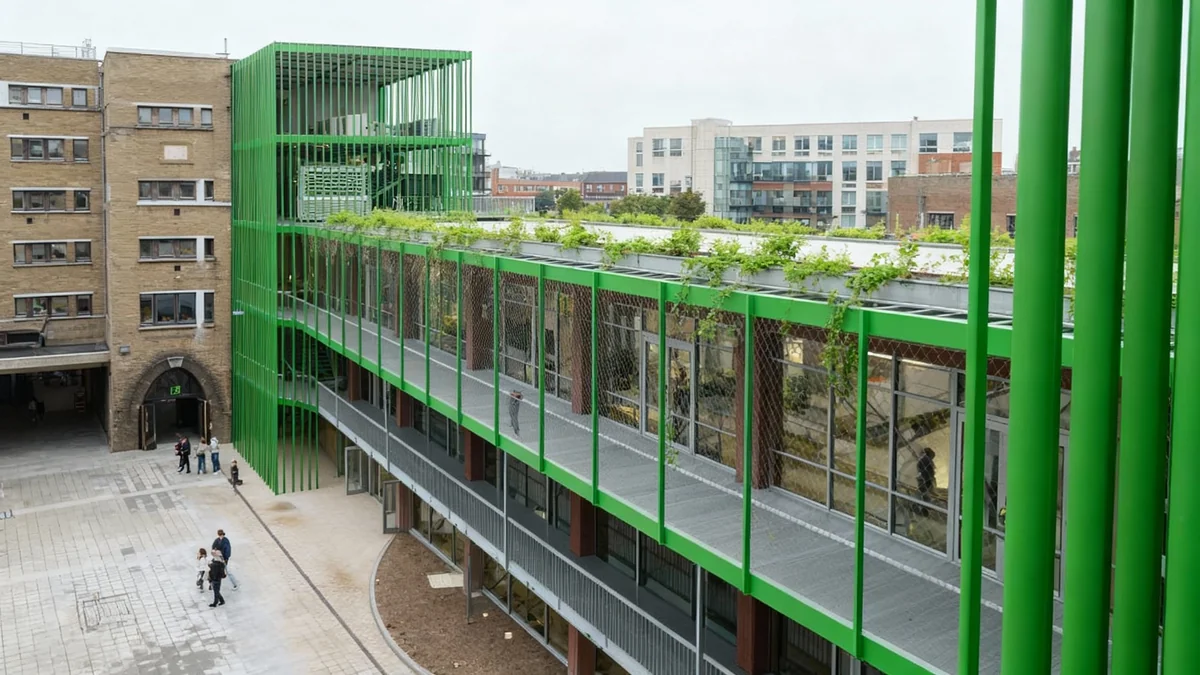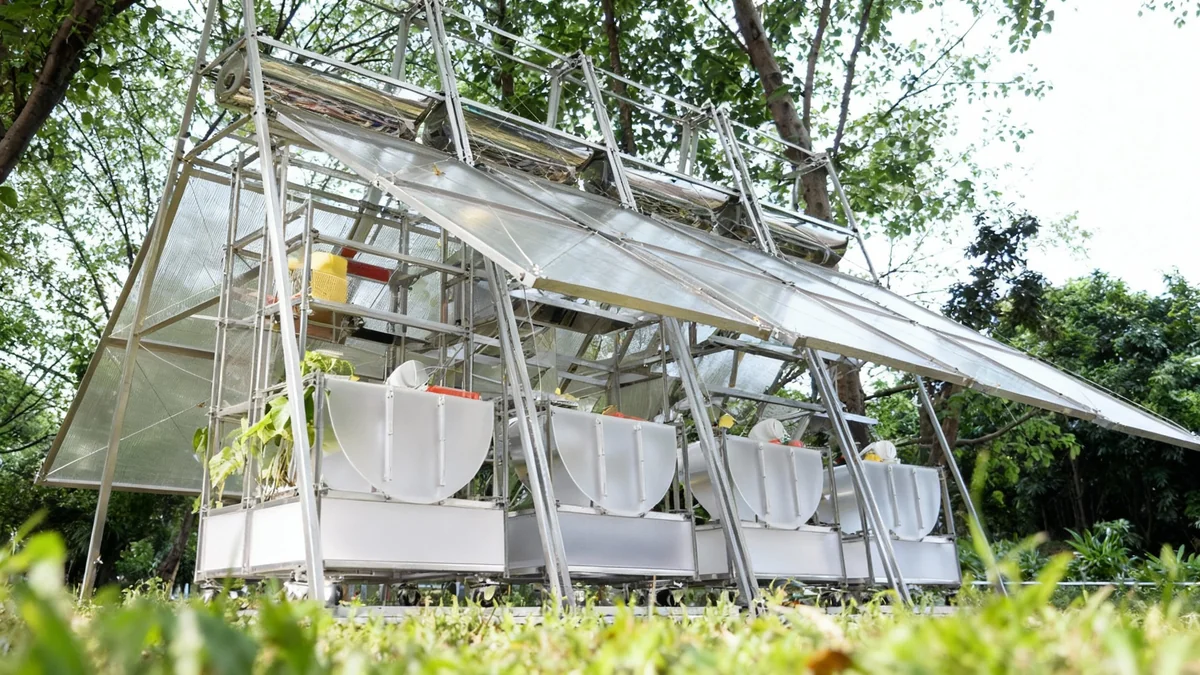Kéré Architecture has unveiled plans for a new art and photography museum in Plüschow, a village in northern Germany. This ambitious project, named Museum Ehrhardt, will feature an 80-meter-long rammed-earth wall and a distinctive timber pergola, marking the firm's first cultural building in the country.
Key Takeaways
- Museum Ehrhardt will be Kéré Architecture's first cultural project in Germany.
- The design incorporates local materials like timber and rammed earth.
- A 3,900-square-meter garden will feature a rainwater collection system.
- The museum aims to enhance northern Germany's cultural landscape.
A Design Rooted in Local Tradition
The museum's design draws inspiration from its immediate surroundings and regional building traditions. The architects have focused on craft-based construction, utilizing techniques common to the area.
Traditional gabled forms are referenced in the external timber structure. The use of clay for the rammed earth walls also connects to historical building practices in the region.
The studio stated, "The building's architecture is contextual and craft-focused, employing regional techniques with wood and clay construction." This approach ensures the museum blends with its environment while offering a contemporary cultural space.
Project at a Glance
- Location: Plüschow, northern Germany
- Exhibition Space: 1,400 square meters
- Garden Area: 3,900 square meters
- Key Material: 80-meter rammed-earth wall
Architectural Features and Interior Flow
The main museum volume is a rectilinear wooden structure. It incorporates asymmetrical inward curves on two facades. One curve accommodates an existing tree, while the other creates an outdoor seating area.
A timber pergola encloses this main volume. This pergola is designed for future dismantling, highlighting a sustainable approach. On the southern facade, it extends outwards to provide shelter for a portion of the garden.
Visitors will enter through a prominent entrance. This leads to a reception desk and a museum shop before opening into the gallery spaces. The interior layout centers around the impressive 80-meter-long rammed-earth wall.
"The wall also improves the indoor climate by balancing humidity and temperature through its thermal mass," the studio explained.
The Rammed-Earth Wall: A Central Element
The rammed-earth wall has an organic, winding form. It curves to enclose a gallery at one end and a multifunctional room at the other. A more open and flexible exhibition space sits between these areas.
The textured clay interiors are illuminated by clerestory openings and carefully placed gallery lighting. This creates a warm and inviting atmosphere for visitors.
Cultural Hub in Northern Germany
Museum Ehrhardt will sit alongside Schloss Plüschow, an existing artist residency and gallery. This integration aims to create a more comprehensive cultural destination in the region. The project was initiated by Jens Ehrhardt, son of German artist Alfred Ehrhardt, and his wife Elke Weicht Ehrhardt.
Integrated Cafe, Roof Terrace, and Sustainable Garden
Behind the main exhibition space, the curving rammed-earth wall also frames a cafe area. Gaps in the surrounding timber structure offer views of the outside, connecting the interior with the natural environment.
An internal staircase from the cafe leads to a roof terrace. This terrace will feature its own garden, providing additional outdoor space for visitors. Renders show a paved outdoor area lined with lush greenery, sheltered by the timber roof.
At ground level, openings from the cafe lead to an adjacent grass-covered garden. This garden serves a dual purpose: it acts as a rainwater collection system. Its topography is specifically designed to efficiently gather rainwater.
The collected water is then used for irrigating the green spaces. This significantly reduces the need for external water sources, making the museum's operation more sustainable. Additional facilities include a kitchen on the ground floor and an office on the first floor for back-of-house operations.
Kéré Architecture's Global Impact
Diébédo Francis Kéré, founder of Kéré Architecture, is known for his culturally sensitive and sustainable designs. While this is his first cultural project in Germany, his firm has completed other notable cultural buildings globally.
These include a brick mausoleum for Burkina Faso's former president and a cultural center in Togo. The Togo project was designed to promote the culture and heritage of the Ewé people, reflecting the firm's commitment to community and local identity.
The execution and planning of Museum Ehrhardt are being overseen by the Austrian studio HK Architekten. Construction is currently underway at the site, with anticipation growing for its completion.




